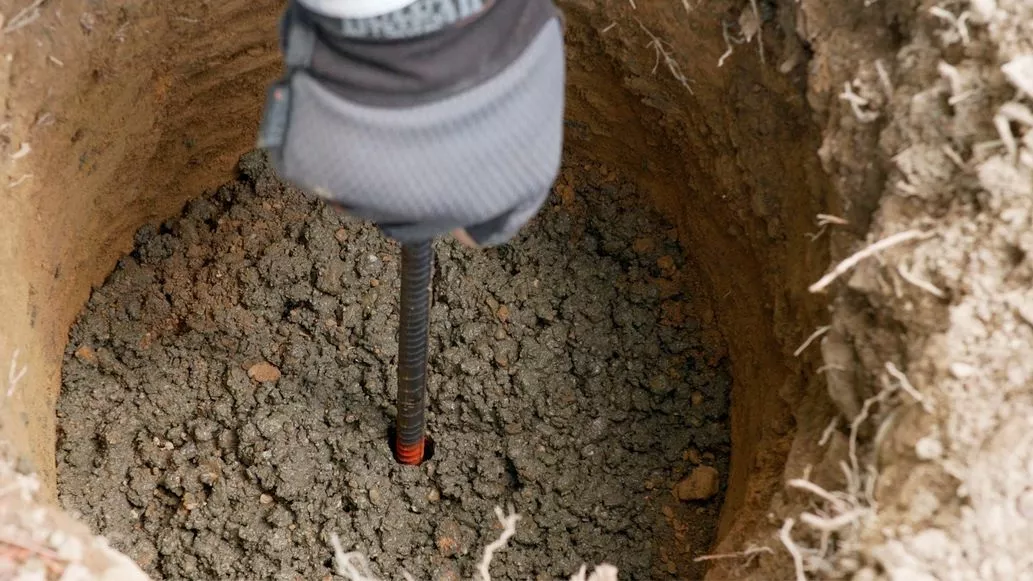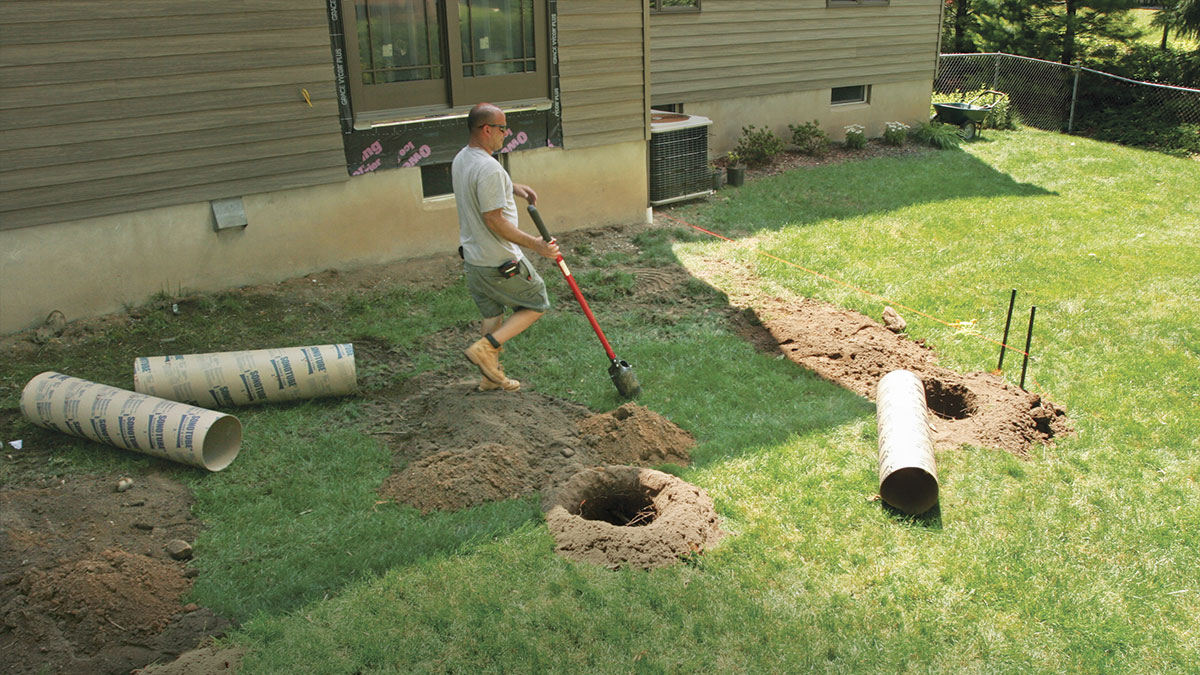Choosing the Right Deck Footings for Security and Toughness
The longevity and safety and security of your deck depend heavily on the kind of footings you pick, as they offer the necessary support and stability to stand up to the test of time. In this discussion, we will check out the numerous types of deck footings, think about the important elements to evaluate when making a choice, and delve into the pros and disadvantages of different options.
Kinds Of Deck Grounds
These footings consist of a cylindrical hole filled with concrete, which provides a solid foundation for the deck messages. Concrete pier footings are relatively easy to mount and offer excellent stability, making them a popular selection for several deck jobs.
An additional kind of footing is the helical stack ground. Helical piles are steel shafts with helical plates affixed to them. These footings are installed by screwing them into the ground, which develops a secure structure for the deck. Helical heap grounds are ideal for locations with tough dirt conditions, as they can be mounted in virtually any kind of kind of soil. If required., they also allow for very easy adjustment and progressing of the deck.
Alternatively, some builders decide for precast concrete footings. These grounds are made from durable concrete and can be found in different shapes and sizes to suit different deck layouts. Precast concrete footings are convenient to set up and supply a stable base for the deck framework.
Finally, an additional option is the post-in-anchor footing system. This kind of footing entails driving a metal support into the ground and connecting it to the deck message. It supplies versatility in regards to positioning the deck articles and appropriates for decks with lightweight frameworks.
When choosing the ideal type of deck footing, it is essential to take into consideration elements such as dirt problems, deck load, and neighborhood structure codes (Deck Footings). Consulting with an expert service provider or structural designer can aid guarantee the suitable ground is chosen for a secure and secure deck
Elements to Think About When Choosing Grounds
When selecting the proper grounds for a deck, it is crucial to meticulously consider various elements such as dirt conditions, deck tons, and adherence to regional building regulations. These variables play a significant duty in making sure the security and resilience of the deck structure.
Among the key aspects to consider is the soil conditions. The sort of soil on which the deck will be constructed determines the type of footings required. As an example, decks improved sandy or loosened dirts might call for much deeper grounds to offer appropriate assistance and stop settling. On the other hand, decks built on clay or expansive dirts might need footings that can suit the dirt's propensity to broaden and contract.
Another essential factor is the deck lots. The weight of the deck, consisting of the materials used and any kind of possible live lots such as furnishings or gatherings, should be considered when selecting grounds. The footings must be made to birth the weight of the deck and disperse it evenly to prevent any architectural concerns or failings.
Finally, adherence to local building regulations is vital. Building codes differ from region to area, and it is vital to follow the particular needs set by the neighborhood authorities. Deck Footings. These codes make sure that the deck is built securely and meets the essential requirements for structural honesty and load-bearing ability
Concrete Footings: Cons and pros

Concrete grounds offer numerous advantages and downsides when made use of as the foundation for a deck. On the positive side, concrete grounds give excellent stability and durability. Concrete is a strong and stiff material that can sustain hefty lots and endure different weather condition problems. It also has a lengthy life expectancy, making it a reliable option for long-lasting use.
One more advantage of concrete footings is their adaptability. They can be put right into check that different forms and sizes to suit numerous deck designs and setups. Concrete footings can be customized to fit the specific demands and needs of the deck structure.
Nonetheless, there are likewise some disadvantages to utilizing concrete footings. One significant negative aspect is the cost and labor associated with their installation. Concrete grounds need excavation and usually require the support of hefty machinery. This can enhance the overall price of the deck job and may require professional assistance.

Helical Piers Vs. Sonotubes: Which Is Much better?
In considering the foundation choices for a deck, the contrast in between helical piers and sonotubes is vital in determining the superior choice. Helical piers, also understood as screw piles, are steel shafts with helical plates connected to them. They are twisted into the ground using hydraulic equipment, providing a steady and sturdy structure for the deck. On the various other hand, sonotubes are cylindrical forms made from cardboard or fiber product that are full of concrete. They are put in an opening explored the ground and provide assistance for the deck.
The helical plates on the piers develop a solid hold with the dirt, avoiding any type of movement or changing of the deck. Sonotubes, on the various other hand, count only on the concrete filling up for stability, which click this site may not provide the same level of stamina and resistance.
In regards to setup, helical piers are reasonably less complicated and faster to mount compared to sonotubes. The hydraulic machinery used to twist the piers right into the ground makes sure a effective and quick process. Sonotubes, on the other hand, call for digging holes and pouring concrete, which can be labor-intensive and time-consuming.
Furthermore, helical piers are an even more flexible option. If required, they can be used in various soil conditions and can be adjusted or enhanced. Sonotubes, on the various other hand, may call for added assistance, such as rebar, in particular soil conditions or locations with high load requirements.
Choosing the Right Footings for Your Deck's Dimensions
For ideal structural integrity, it is necessary to very carefully select the proper grounds that line up with the dimensions of your deck. The dimensions of your deck, including its elevation, size, and length, play a substantial duty in figuring out the type and size of grounds needed.
When selecting footings for your deck, it is essential to take into consideration the load-bearing ability of the soil. The weight of the deck, combined with the weight of any furnishings or people on it, puts in a significant pressure on the footings (Deck Footings). It is vital to select grounds that can properly sustain this weight without changing or sinking over time.
Bigger decks with greater measurements call for bigger footings to provide adequate security and support. The shape of the footings, whether they are square or rounded, depends on the layout and layout of the deck.
Verdict
In verdict, selecting the right deck grounds is vital for guaranteeing stability and longevity. Elements such as the sort of footings, the deck's dimensions, and the benefits and drawbacks of various choices should be taken into consideration. Concrete footings provide toughness and longevity, but may be more costly and time-consuming to install. Helical piers and sonotubes have their very own advantages and disadvantages. Ultimately, choosing the proper grounds for your deck's particular requirements is necessary for a successful and lasting structure.
These footings consist of a round hole filled up with concrete, which supplies a strong foundation for the deck posts. Concrete pier footings are reasonably easy to install and provide outstanding stability, website here making them a popular selection for lots of deck tasks.
Precast concrete grounds are practical to mount and give a steady base for the deck framework.
It provides adaptability in terms of positioning the deck blog posts and is appropriate for decks with lightweight frameworks.
Concrete grounds use a number of benefits and downsides when made use of as the foundation for a deck.